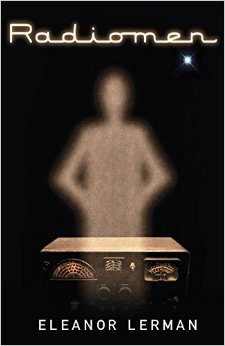 Radiomen
Radiomen
by Eleanor Lerman
The Permanent Press. 288 pages, $11.99
Eleanor Lerman’s first book of poetry, Armed Love, published when she was 21, was a finalist for the 1973 National Book Award. The New York Times described the book as “X-rated” for its explicit explorations of sexuality and gender. After publishing a second book in 1975, Lerman stopped publishing for 25 years. In 2001, Sarabande Books commissioned a book of poems, and that was enough to get Lerman publishing again. Radiomen is her eighth book since 2001, with many awards in between, including Guggenheim and NEA fellowships and the Lenore Marshall Poetry Prize given by the American Academy of Poets and The Nation. I’m proud to have published Eleanor Lerman’s poems in Lavender Review.
In Lerman’s third novel, Radiomen, every detail and device works in the service of the whole; the book is a wonder of cohesion. The protagonist and narrator, Laurie Perzin (as in person?), is a marginalized misfit—restless, alienated, and angry. Laurie has no identity. She’s a shadow person living in a shadowy place, working the dark hours in a bar with no windows and with several TVs on at once blasting sports. This bar, The Endless Weekend, located at JFK Airport, bathes her with noise at her bartending job. When she gets home, which is in a remote industrial section of Queens, she’s bathed with the noise of a place called Automobile Alley. In the first dozen pages of the book, we’re bombarded with references to the underworld and other worlds of trucking, smuggling, UFOs, telepathy, television, ghost signals, the Internet, ships, jets, clocks, and satellites. But all these forms of transportation and communication are only another source of alienation for Laurie, preventing her from tuning in to her own thoughts.
However, Laurie likes to listen to her radio. One night she calls in to a late-night talk show and we’re introduced to the host, Jean Shepherd, and his guest, a psychic called Ravenette. We’ll learn how apt these characters’ names are as the pages turn. Shepherd and Ravenette both seem to tune in to Laurie, but she’s tough and confrontational; their meetings will end in near-fistfights and fuck-you’s. Laurie reports that she has had both girlfriends and boyfriends, that she lost touch with her family, and that her mother died young. All this helps explain her alienation and anger. Laurie’s tentative “radio” connections build throughout the book into a satisfying network.
As a metaphor, “reception and tuning in a specific frequency” refers to Laurie Perzin’s own ability to tune into herself, which is what this story is about. She fights it at first but is slowly receptive. Helpful dogs, whose dark eyes glitter like stars in the night sky, mysteriously appear one at a time and lean against her leg. Her neighbor, an illegal immigrant from Mali, appreciates the kind things Laurie has done for her, and gives her (with difficulty, since Laurie argues about everything) a Dogon dog. Some interesting Dogon culture figures into the story. A cult leader, Raymond Gilmartin, and some of his followers place dangerous obstacles in Laurie’s path. Gilmartin is described in a way that makes him sound slightly satanic, like an Antichrist figure: “As Raymond spoke, his voice remained smooth as oil, but I heard something else in it: the visual image that came to me of little fires burning around the edges.” In contrast, the otherworldly radio man’s pissed-off sissy hiss is not to be missed.
Laurie learns how to calm down enough to listen attentively, to think, and to fight antagonists in a smart way. By the end of the novel, she has tuned in to something truly wonderful, and she feels “energized, awake, alert.” Amazingly, that’s how Radiomen made me feel.
_____________________________________________________
Mary Meriam is the author of Conjuring My Leafy Muse and Girlie Calendar.






